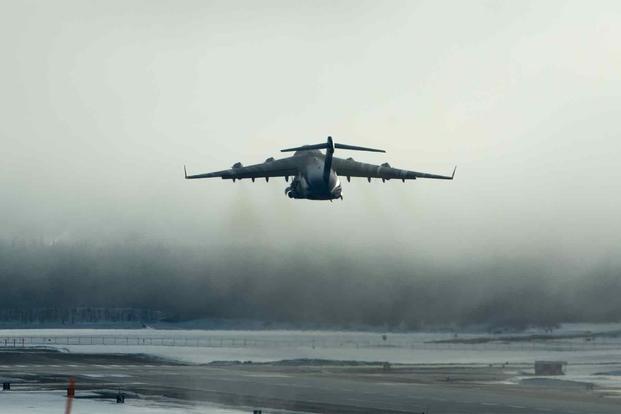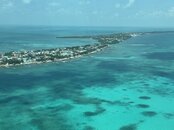You are using an out of date browser. It may not display this or other websites correctly.
You should upgrade or use an alternative browser.
You should upgrade or use an alternative browser.
Flying in a bi-plane post dive
- Thread starter Mrjoemorgan
- Start date
Please register or login
Welcome to ScubaBoard, the world's largest scuba diving community. Registration is not required to read the forums, but we encourage you to join. Joining has its benefits and enables you to participate in the discussions.
Benefits of registering include
- Ability to post and comment on topics and discussions.
- A Free photo gallery to share your dive photos with the world.
- You can make this box go away
I'd like to clarify that this was a very unusual occurrence, and that events like this are not the reason behind the recommendations around flying after diving. Any ascent to too high an altitude too soon after diving can result in additional dissolved inert gas being liberated and causing DCS symptoms.Flying restrictions are more in case of explosive decompression, than cabin altitude itself.
Even not diving beforehand does not mean you're safe.

'Up-and-Comer' in Missile Defense Agency Died Following Air Force C-17 Testing Mishap
A civilian employee with the Missile Defense Agency died last year after experiencing decompression sickness aboard an Air Force C-17 during a missile testing flight, an accident investigation revealed.www.military.com
Best regards,
DDM
If you want to be really safe, configure your dive computer to act like you are diving at an altitude of 4000 feet. Then dive the computer.
I used to do that when I dove in Clear Lake, Oregon. I’d use the tables as if the dive were at 6000 feet, as after the dive we needed to drive back home over the mountains, and the pass was 6000 feet, whereas the lake was at 4000 feet.
SeaRat
I used to do that when I dove in Clear Lake, Oregon. I’d use the tables as if the dive were at 6000 feet, as after the dive we needed to drive back home over the mountains, and the pass was 6000 feet, whereas the lake was at 4000 feet.
SeaRat
It sounds like you're suggesting one can do this and immediately be safe to fly to whatever phantom altitude you configured. It doesn't work that way in general, in spite of your successful Clear Lake, Oregon experiences.If you want to be really safe, configure your dive computer to act like you are diving at an altitude of 4000 feet. Then dive the computer.
An obvious example illustrating the failure is the typical 8000 ft flight altitude after a dive to 66 ft at sea level (3 atm).
After tricking your computer to think it's at 8000 ft elevation (ambient pressure of 0.742 atm), it would read that 3 atm pressure as a dive to 75 ft. (Surface pressure + water pressure = 3 atm) As an aside, I'm glossing over the 33 fsw vs 34 ffw per atm issue.
What does the computer think the NDL for a 75 ft (3 atm) dive at 8000 ft is? Let's assume the computer's guidance is aligned with the Navy tables, so you'd need the equivalent altitude at 8000 ft to figure it out. A depth of 75 ft at 8000 ft is equivalent to about 100 ft at sea level (where the tables are valid), so the NDL guidance is 25 mins.
Say your actual dive, then, is 25 min at 66 ft at sea level, exiting at pressure group F (Navy tables directly applied). According to the Navy Ascent to Altitude table, you would need to wait for more than 7 hours hour before ascending 8000 ft.
Flying after diving is NOT about obtaining tissue loading that would be considered safe if you dove at the flight altitude. It needs to be MUCH lower.
You tried to dial in 6000 ft worth of margin, but only ascended 2000 ft. While flawed in concept, the excess conservatism more than compensated.I used to do that when I dove in Clear Lake, Oregon. I’d use the tables as if the dive were at 6000 feet, as after the dive we needed to drive back home over the mountains, and the pass was 6000 feet, whereas the lake was at 4000 feet.
Mrjoemorgan
New
Hey everyone, thank you so much for all your helpful answers. Really appreciated the added knowledge and context.
I’ll be flying from coast to coast so it’ll 2500-3000ft above sea level. (Which hopefully means I’ll get nice views of the reefs etc)
Sounds like I’ll be all good.
Thanks again
Joe
I’ll be flying from coast to coast so it’ll 2500-3000ft above sea level. (Which hopefully means I’ll get nice views of the reefs etc)
Sounds like I’ll be all good.
Thanks again
Joe
I stand corrected.It sounds like you're suggesting one can do this and immediately be safe to fly to whatever phantom altitude you configured. It doesn't work that way in general, in spite of your successful Clear Lake, Oregon experiences.
An obvious example illustrating the failure is the typical 8000 ft flight altitude after a dive to 66 ft at sea level (3 atm).
After tricking your computer to think it's at 8000 ft elevation (ambient pressure of 0.742 atm), it would read that 3 atm pressure as a dive to 75 ft. (Surface pressure + water pressure = 3 atm) As an aside, I'm glossing over the 33 fsw vs 34 ffw per atm issue.
What does the computer think the NDL for a 75 ft (3 atm) dive at 8000 ft is? Let's assume the computer's guidance is aligned with the Navy tables, so you'd need the equivalent altitude at 8000 ft to figure it out. A depth of 75 ft at 8000 ft is equivalent to about 100 ft at sea level (where the tables are valid), so the NDL guidance is 25 mins.
Say your actual dive, then, is 25 min at 66 ft at sea level, exiting at pressure group F (Navy tables directly applied). According to the Navy Ascent to Altitude table, you would need to wait for more than 7 hours hour before ascending 8000 ft.
Flying after diving is NOT about obtaining tissue loading that would be considered safe if you dove at the flight altitude. It needs to be MUCH lower.
You tried to dial in 6000 ft worth of margin, but only ascended 2000 ft. While flawed in concept, the excess conservatism more than compensated.
Thank you.
John (SeaRat)
Mrjoemorgan
New
Similar threads
- Replies
- 8
- Views
- 845
- Replies
- 35
- Views
- 4,897
- Replies
- 30
- Views
- 4,647





